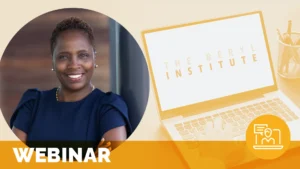Driving Experience Excellence Through Awareness, Engagement and Implementation

On the Road with University of Arkansas for Medical Sciences – February 2015
by Jason A. Wolf, Ph.D.
A Strategy for Success and a Big First Step
This month’s on-the-road visit reveals a comprehensive effort to address the patient and family experience and focus on the principles of patient- and family-centered care (PFCC) found at its core. I was honored to spend time with and speak to the team at the University of Arkansas for Medical Sciences (UAMS) in Little Rock, including members of the PFCC team, patient advisors and front line leaders and staff.
My visit began well before I arrived with an introduction to the structures and principles that guide experience efforts at UAMS. Julie Moretz, the institution’s first associate vice chancellor for patient- and family-centered care and my host for this journey, helped paint a picture of the efforts at UAMS outlined below. She also shared her excitement for the inaugural Patient Experience Symposium at UAMS where I had the privilege to speak and share thoughts to both individuals on campus and virtually to health care organizations across the state of Arkansas.
The intent of the Symposium was clear and reinforced, from the start, the intention with which UAMS is tackling the importance of patient experience. “Every employee at UAMS, whether clinical or not, has the responsibility for taking care of our patients and families or supporting those who do,” Julie said. “This Symposium will challenge us all to identify our personal role and how we are held accountable for improving the patient experience.”
Dr. Dan Rahn, UAMS Chancellor, reinforced this message as he welcomed people to the Symposium calling the focus on patient experience a “virtuous undertaking.” In his introduction to the event, he underscored a critical point I believe central to experience efforts. “A focus on the experience of patients and families is not an initiative or a program,” he shared. “Rather it is essential for our work in bringing value to our society.”
This was reinforced in the messages heard through the stories presented at the Symposium, from the exemplars with Food Services to the Emergency Department (which I will share below) and including the launch of a powerful new recognition, The Eli Award. This award honors a patient and his family cared for by UAMS and recognizes a member of the UAMS team for exemplifying a commitment to creating a meaningful experience through their actions. The power of this commitment exemplified in the Symposium, was not just about the messages of the speakers, but more so was about a statement of commitment UAMS is making to ensure all members of the community understand and are supported in their role to provide the best in experience for all in their care. As Julie offered, “The Symposium speaks to front-line staff in all disciplines, health care leaders, physicians, nurses and other clinicians, residents, and students as well as our patient advisors because we are all in this together – we are the patient experience.”
In recognizing the critical nature of this broad level of perspective and active engagement from all roles, the team at UAMS has been hard at work building a framework for action.
A Framework for Leadership – The PFCC Leadership Team
The team at UAMS has been working hard, not just to say experience is central to their work, but they have made a commitment to engaging all the voices central to an effort of this magnitude, including the complexities that arise when working in an academic environment.
The figure, seen here, provides a visual for the comprehensive and integrated nature of an effort focused on effective action. Grounded in the ideas of raising and sustaining awareness and engagement, and ensuring effective and continuous implementation, the team at UAMS has aligned a broad interdisciplinary and cross functional team to move beyond the idea of experience as a program, to one which exemplifies, quite simply, what the organization strives to be and provide every day.
This strategy guides experience efforts from the top, including Julie, the Chancellor, the CEO/Vice Chancellor for Clinical Programs and the Provost of the Institution. Yet, it also purposefully engages a wide range of roles from physician and nurse leaders, to patient and family advisors, from research to communication, human resources to health professions education, and from measurement to setting standards. This comprehensive effort reinforces the importance of the many voices needed to drive successful action in providing a positive patient experience. It also highlights a central point I have shared often. Experience is truly singular for the “end user” in our care systems, and while we delineate many things in our provision of care – such as quality, safety, service, etc. – we must recognize that together, they represent one experience for the patient or family member. For that reason, we must think as one experience in taking action. This model exemplifies this opportunity brilliantly.
But more than just structure, this integrated strategy is grounded in the PFCC principles of dignity and respect, information sharing, participation and collaboration. More so, powerfully Julie has concentrated on the very transformational nature a focus on experience can provide an organization. Citing Berwick, Clancy, and Conway as shared at the Lucian Leape Institute at the National Patient Safety Foundation, October 2009, the efforts reinforce the point that to become a safe, effective, high reliability organization, health care organizations must implement five major transforming concepts. While other ideas and actions are needed to bring about the changes in the complexity of the health care system, the following ideas rest at its core:
Transparency must be a practiced value in everything we do;
Care must be delivered by multidisciplinary teams working in integrated care platforms;
Patients must become full partners in all aspects of health care;
Health care workers need to find joy and meaning in their work; and
Medical education must be redesigned to prepare new physicians to function in this new environment.
You can see the powerful commitment an effort of this magnitude requires and also the clear accountability an academic institution can feel with not only providing care, but developing the leaders of tomorrow. To ground this commitment in action, UAMS has defined central pillars under which they can focus both intent and effort.
A Focus on Execution – The UAMS PFCC Pillars
In sharing this structure for execution, Julie reinforced that more than a list of ideas, these pillars represent a statement of purpose and action, and also provide a means by which to gauge progress and overall success. I share these ideas here as written for they provide strong guidance for other organizations looking to structure efforts in a clear and succinct way. I must also note that there is incredibly strong alignment to the very nature of patient experience and the role of effective patient experience leaders we have seen emerge in the final stages of planning for patient experience professional certification.
The UAMS PFCC Pillars, which includes patient and family engagement, are:
Pillar I – Cultural Integration of Patient- and Family-Centered Care
Integrate a patient- and family- centered care philosophy into the mission, values, and strategic plan of UAMS.
Pillar II – Building Partnerships
Collaborate with UAMS leadership, direct care providers, staff, administration, and patient and family advisors in understanding the importance and value of partnerships with patients and families.
Involve Patient and Family Advisors in meaningful roles in health care at UAMS.
Pillar III – Engaging and Empowering Employees (Faculty, Staff, and Students)
Development of a comprehensive internal communication and education plan to coincide with external marketing;
Recognize opportunities to build on employee strengths through education (support, training, awareness);
Integrate PFCC into HR policies and procedures including hiring practices, orientation, competencies, and evaluation.
Pillar IV – Implementing Processes and Practices
Redefine operations to expect partnerships with patients, families and employees as well as meaningful roles in decision-making.
Pillar V – Measuring Outcomes
Expand the UAMS definition of effectiveness measures to include outcomes that reflect patient- and family-centered practices. Develop tools to track progress in advancing the practice of patient- and family-centered care and its impact on quality and safety.
In these pillars, Julie shared they have created a framework for action. As I have reflected on my previous visits to facilities and organizations around the world, I have seen many strong process models for focusing actions. This example shared by the team at UAMS may be the most powerful, first, for its comprehensive simplicity and clarity, and second, for its clear bias for action and outcome. As Julie shared with me, “Our five pillars are our action plan—this was developed by a diverse, dedicated team that believes strongly in the strength of each pillar. These pillars reflect motivation and commitment and we will and must always be doing these things in support of our patients and families.”
A Commitment to Voice
Inherent in my visit with the UAMS team was something we continue to see as central to patient experience excellence – a commitment to voice. That is giving voice to all engaged in the health care experience and then listening and acting on what is heard. During my visit, I had the honor to meet and spend time with some of the direct care providers and leaders and engage with a powerful group of patient and family advisors committed to supporting UAMS in their efforts.
Engaging Patients and Family
I was privileged to have lunch with a broad section of the patient and family advisors during my visit and was able to learn a great deal about the commitment and engagement of these individuals in the daily workings of UAMS. Not just a council of individuals providing occasional advice, they play a vital role in providing input and direction strategy and direction of the organization. Guided by PFCC team member Barbie Brunner, director of Patient- and Family-Centered Care, patient and family advisors play roles across the continuum of services at UAMS and are engaged in a variety of ways from direct input to advisory councils, and active engagement with events and programs to helping frame organizational strategy. Barbie oversees eight Patient/Family Advisory Councils and works with advisors operationally to ensure their voices are embedded and heard throughout the organization. Patient advisors participate on standing committees, work groups, and in policy reviews–such as a recent effort to revise a Code Blue Policy that now captures the importance of choice if the family wishes to be present during a code and that their needs are respected during this most challenging time.
Larry Taylor, chair of the Hospital Advisory Council, shared, “As patient and family advisors, we all came here with a story and with an intention and we now come together not as tangential to the organizations efforts, but as a central part of all that is accomplished.” While I will not lay out the structure UAMS has created for its advisors, I will add that there is an incredible intentionality and purpose for ensuring the voices of patients and families are central to as much of the work of the organization as possible.
With the strong and growing effort to engage patient and family voice, Julie and Barbie shared that it remains an important work in progress. Of special note is that the advisory council is included as part of the formal organization chart, providing it formal recognition in the structure of the organization. But it seems, and rightly so, that the goals of UAMS are to go beyond words on paper to impact through action. The patient and families I spent time with during my visit seemed focused on and vigilant to that cause as well. It may have been summed up best by one of the patient advisors who shared, “I was honored to be asked for my opinion and now I am committed to giving it. And while I am not sure they knew what they were going to get in inviting me, I know they care about what I have to say.”
Leading at the Front Lines of Care
Also through my visit, the critical focus on experience was made real through the stories told and experiences shared of those on the front lines of care. From examples provided at the symposium, to a tour of the NICU with Becky Sartini, NICU Clinical Services Manager, I was exposed to efforts being taken on to drive experience excellence across the spectrum of care.
A story shared by Tonya Johnson, Chief Clinical Dietitian, exemplified a call for above and beyond effort. She told one story of an elderly patient who was challenged with eating during her hospitalization. She was on a special diet given her medical condition and a nutritionist noticed that she was not eating. The nutritionist asked her if she could bring her something that she would like to eat. The patient responded that she loves blueberry pie and cheese puffs like she eats at home. Through collaborative efforts of the physician, dietitian, and nutrition services, the patient’s dietary restrictions were removed, and these food items, which are not standard menu items, were ordered from the distributor. The patient enjoyed blueberry pie and cheese puffs every day for two weeks until she died. Although patient- and family-centered care is linked with safety and quality of care, this is a great example of recognizing how we can make an impact to improve the patient’s experience. What a difference we can make when we listen to the stories and preferences of our patients.
What this story exemplified for me was not service for service sake, but a true effort to understand needs, work within the framework of an experience mindset being mindful of quality, safety and service issues and offer creative solutions with a commitment to exceptional experience. While we cannot provide blueberry pie and cheese puffs in every encounter, what it shows us is we need to listen and work with our patients as appropriate to understand their needs and be open to address when and why we can or cannot meet them. Understanding and addressing expectations in health care are powerful levers in how people gauge us and how we can have a positive impact on everyone in our care.
This idea of understanding expectations was shared by Dr. Tony Seupaul, Chair, Department of Emergency Medicine, who talked about the focus they are taking in the Emergency Department at UAMS. Dr. Seupaul acknowledged an important point we cannot overlook in the experience conversation – that we cannot make everyone happy in every moment, but we can, in each of those moments, work to both understand and help people understand. We need to keep people informed, we need to be willing to ask questions and engage, and we need to be willing to give thoughtful and honest responses.
He talked about how in the ED, as they are working to continually improve their performance, they are focused on some purposeful fundamentals – listen, engage and invest. This model is significant as it helps the team outline what is critical to how they communicate with the people in their care. Listening is fundamental to understanding the perspectives of all involved in any situation. Engaging is a commitment to providing a sense of ownership and clear involvement in the process taking place. It moves us from listening to having people feel that they have been heard. Investing is a powerful concept I have not seen expressed often in health care settings in this way. The idea is that we must also be willing to show our commitment to action. Beyond just a focus on hearing and involving, we need to have a roadmap for moving forward. This outline shared by Dr. Seupaul in many ways framed the ongoing efforts at UAMS overall. That, at its core, was more than just ideas—it is a commitment to action itself.
This may have been no better exemplified than in my final visit of the day with Becky Sartini, NICU Clinical Services Manager. While the small efforts taking place to provide a personal touch for the patients and families receiving care were evident, what Becky shared was a macro strategy; I dare say a philosophy about the critical nature of patient and family involvement. In providing excellence in what I have outlined before as the Three Ps of patient experience – people, process and place – the work happening in UAMS’ NICU was striving to address all three elements. Aside from providing a place for patients and families to be part of the care process, the way in which families are being engaged and the individuals who comprise the team are all critical. There was a clear commitment to a comprehensive effort of acknowledging and engaging family where they are and at their point of need as well as providing them with what they need as parents with children in the NICU across the spectrum from information and education, to comfort and compassion.
While these examples only scratch the surface of the myriad of efforts taking hold at UAMS, they do help frame the critical levers central to the work going on every day to drive their experience efforts forward.
Driving Experience Excellence
The team at UAMS will be the first to say, while much is underway, they have much more to accomplish. As I have shared on numerous occasions, I believe it is the high performers who realize and acknowledge they are never truly “there.” As Julie shared with me as I was wrapping up my visit, “There is a lot of work going on and a lot that still needs to happen!”
In asking about opportunities and advice for others, Julie offered, first have a plan that is shared, understood and supported across all levels in the organization. She also suggested the value of having experience efforts embedded directly into the human resource processes of the organization. When this occurs, you create the foundation for clear alignment with people to purpose. In reassuring this alignment, she also cautioned about the efforts and intention it takes to develop and share education for all individuals. She stressed, “Creating shared learning is critical as it becomes your foundation for structure and understanding, and provides a process for consistency.”
In preparing for the Symposium and in reporting on its success, Julie reminded me of a fundamental “truth” (my word, not hers) on what will help not just UAMS, but any of us driving experience excellence. She noted, “As we know and as we must remember, patient experience and patient- and family-centered care is a journey, not a destination.” It is something that requires diligence and unwavering focus. And I know for so many of us, it is a journey worth taking.
Thanks so much to Julie Moretz and the entire team at UAMS for the honor of not only participating in the Patient Experience Symposium, but for the opportunity to spend the day visiting with and learning from them. As Julie so aptly shared with the participants at the event, “You are the patient experience!”
Related content
-
 Culture & Leadership | Infrastructure & Governance
Culture & Leadership | Infrastructure & GovernanceExperience Management Everywhere
The healthcare industry continues to evolve. Patient expectations evolve along with it. Patient Experience (PX) teams must evolve as well to address current challenges and proactively position themselves for continued impact. To remain relevant and impactful, next-generation experience teams must democratize experience management, ensuring the appropriate ownership at every organizational level. Attend this session to
Learn more -
 Culture & Leadership
Culture & LeadershipCPXP Informational Webinar: Your Guide to the CPXP Credentialing Process (August 2025)
Complimentary – 12pm ET / 11am CT / 10am MT / 9am PT – Join us for an insightful informational webinar hosted by The Beryl Institute Credentialing team. In this session, we will walk you through everything you need to know about the CPXP (Certified Patient Experience Professional) credential, designed for human experience professionals. During
Learn more -
 Culture & Leadership | Infrastructure & Governance | Innovation & Technology
Culture & Leadership | Infrastructure & Governance | Innovation & TechnologyED Processes & Improvements: Implementation Best Practices & Outcomes
In this webinar, an Associate Chief Experience Officer, a Program Director, an Analyst, and a consultant will present what they did to improve patient experience outcomes across seven hospitals’ emergency departments which resulted in improved HCAHPS scores in all seven hospitals. The strategic, systemwide process improvements are based on analyses provided through Epic tools and
Learn more
